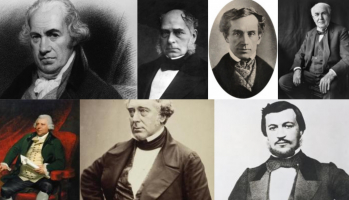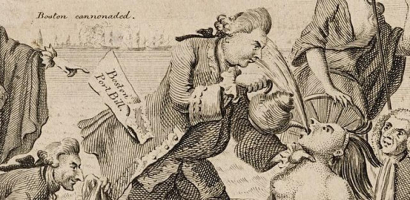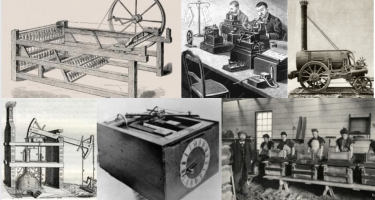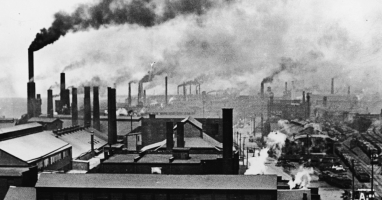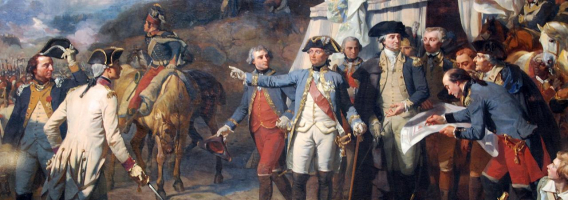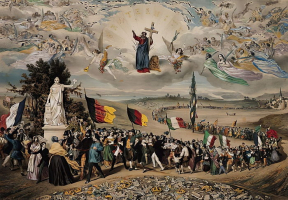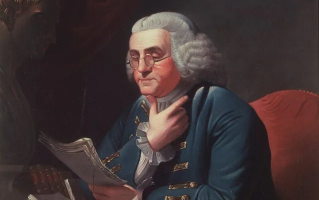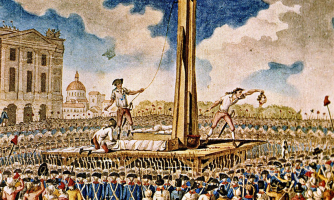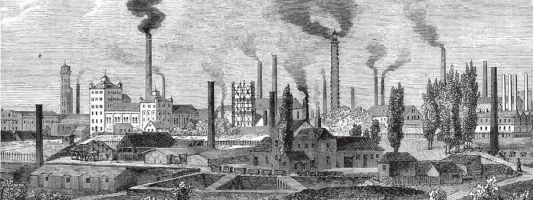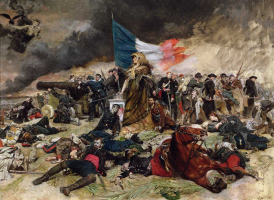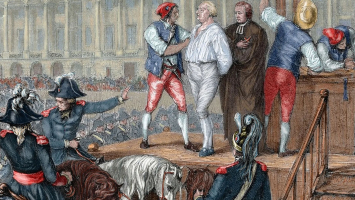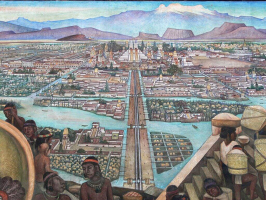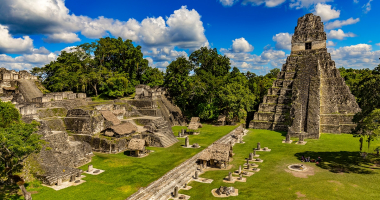Top 8 Major Causes of the Industrial Revolution
In modern history, the Industrial Revolution was the transition from an agrarian and handicraft economy to one dominated by industry and machine production. ... read more...These technological advancements provided new methods of working and living, drastically altering civilization. Here are the 8 major causes of the Industrial Revolution.
-
Capitalism is one of the major causes of the Industrial Revolution. Capitalism is an economic system centered on the private ownership and operation of means of production for profit. Capital accumulation, competitive markets, the price system, private property, property rights recognition, voluntary exchange, and wage labor are all key features of capitalism. In a capitalist market economy, owners of wealth, property, or the ability to maneuver capital or production ability in capital and financial markets determine decision-making and investments, whereas prices and the distribution of goods and services are primarily determined by competition in goods and services markets.
The Industrial Revolution was driven by capitalism since industrialization required major labor and investment from individuals, not necessarily the government. For example, affluent entrepreneurs were crucial in Britain, where the Industrial Revolution began, since they utilized their wealth to build factories and mines. This investment from individuals motivated by profit would not have been conceivable without the emergence of capitalism. Furthermore, once the Industrial Revolution began, the individualistic ideals of capitalism contributed to the creation of an environment in which industrialization blossomed and finally extended globally.
According to History Crunch, in the societies of the Industrial Revolution, capitalism was a major component of classical liberalism. Classical liberalism was an economic individualism-based ideology founded on the ideas of economic freedom, private ownership, competition, self-interest, and self-reliance. In general, all of these concepts emphasized little or no government participation in the market and as much economic liberty as possible for individuals. This was in contrast to the previously mentioned mercantilism, which advocated for extensive government regulation and intervention. Classical liberalism's economic concepts first emerged in the 18th and 19th centuries, quickly shifting European civilization from left-sided mercantilism to right-sided capitalism.
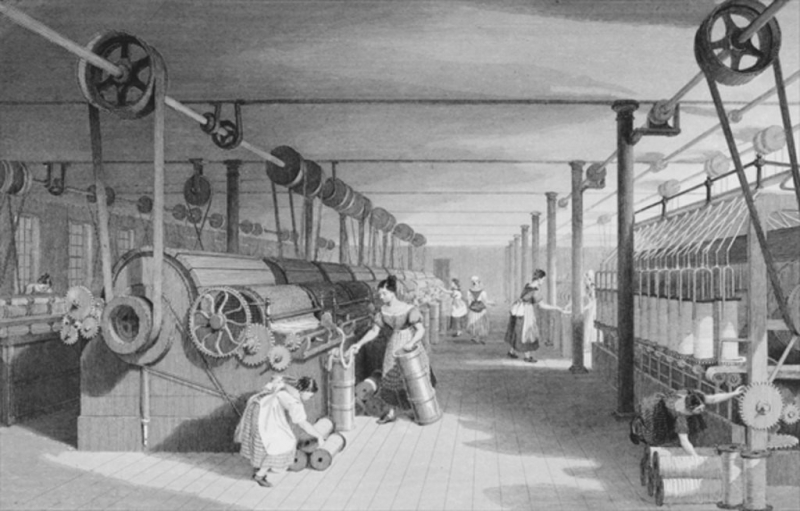
medium.com 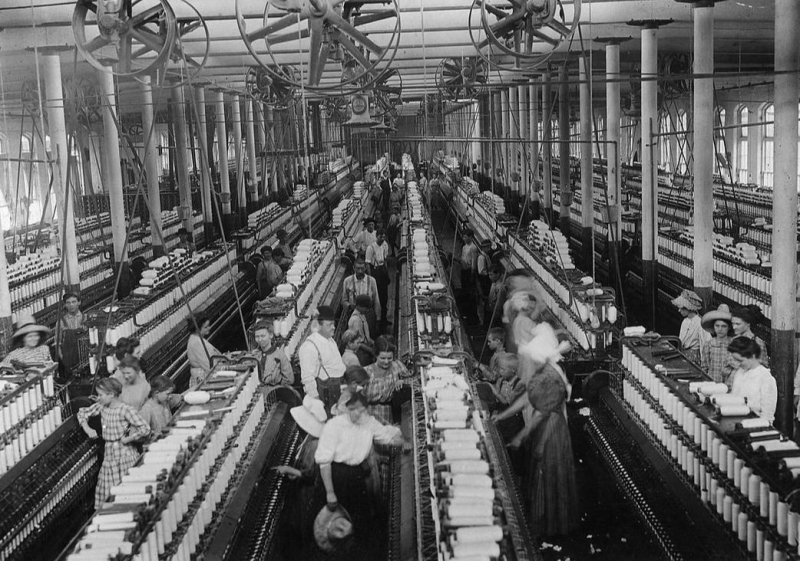
historycrunch.com -
Imperialism is the state policy, practice, or advocacy of spreading authority and dominion, particularly through direct territorial acquisition or obtaining political and economic control of other areas, frequently through the use of hard power, particularly military force, but also soft power. While colonialism and empire are related notions, imperialism is a unique concept that can apply to numerous modes of expansion and many forms of administration.
The Age of Imperialism, which began around 1760, saw European nations industrializing and colonizing, influencing, and annexing other portions of the world. Because of the resources made accessible by imperialism, the world's economy increased enormously and became much more integrated in the decade preceding World War I, enriching and prospering the various imperial states.
Europe's territorial imperialism was primarily concerned with economic growth through resource collection from colonies, as well as acquiring political authority through military and political means. In the nineteenth century, European expansion surged dramatically. In order to obtain raw materials, Europe increased imports from foreign countries and colonies. European industrialists sought raw commodities from elsewhere, such as colors, cotton, vegetable oils, and metal ores. Concurrently, industrialization was rapidly transforming Europe into the center of manufacturing and economic expansion, pushing resource demands.
According to Parvanova, the Industrial Revolution made it necessary for Europe to take over colonies all over the world. An empire will always desire to add colonies as a measure of national grandeur, but now there was an added incentive to conquer new lands. Because the Industrial Revolution dramatically enhanced Western states' production capability, there was a huge demand for raw materials to meet demand. The Western powers desired colonies where raw minerals were plentiful and could be obtained for little or no cost. Of course, their attention was drawn to Africa, which was rich in resources such as oil, ivory, rubber, wool, cotton, cocoa beans, copper, gold, iron, cobalt, diamonds, and so on.
Another reason is that the European empire developed enormous goods markets. For example, as European countries colonized parts of the world, trade routes were developed. This meant that any commodities manufactured in European factories may be shipped and sold to marketplaces all over the world. This contributed to the expansion of industrialization by allowing European firms to produce items on a much greater scale.
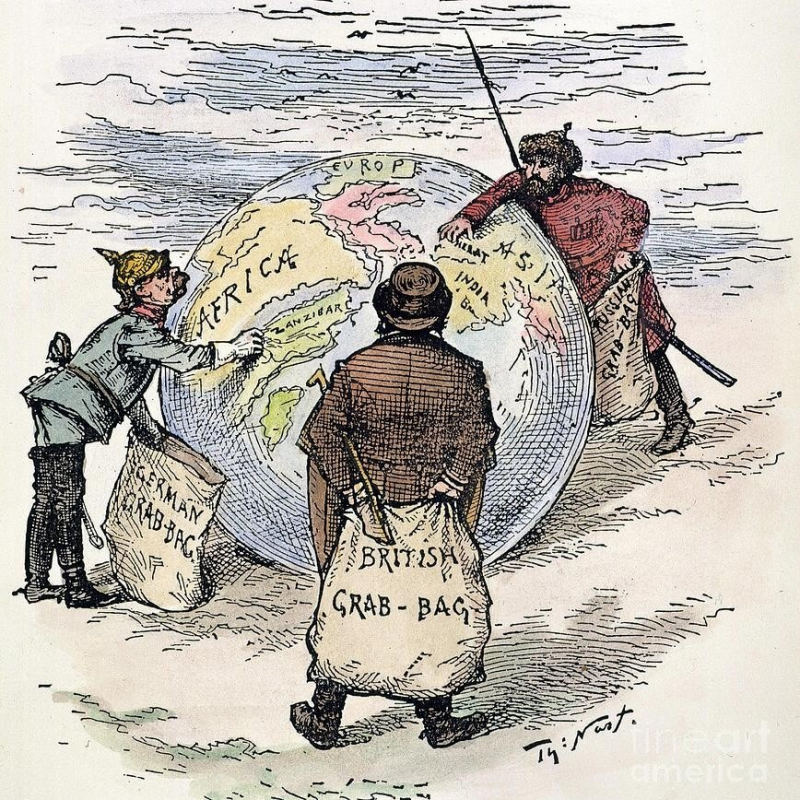
studentsofhistory.com 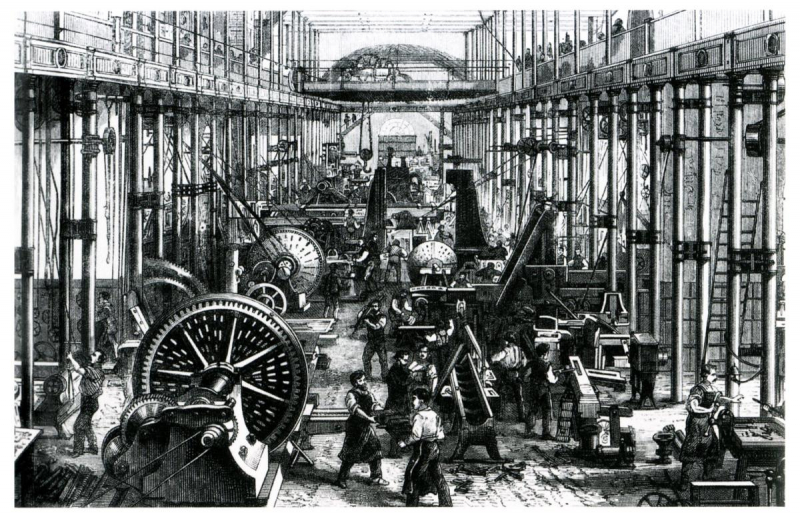
owlcation.com -
One of the major causes of the Industrial Revolution is the mining of resources such as coal, which was critical to the industrialization processes. Coal reigned supreme during the British Industrial Revolution. As coke, it was an efficient fuel for dependably converting iron ore to iron. In 1781, cheap iron was used to construct the iconic Ironbridge Gorge bridge across the River Severn. And it was from this that the machinery that filled the new factories of the industrial age was constructed.
According to Ville, coal then drove the equipment and lit the "black satanic mills" that transformed cotton manufacturing, as recounted by English poet William Blake (1757-1827). It powered James Watt's double-acting piston engine, which transformed reciprocating motion into rotary motion via a crankshaft. The ensuing steamships and railway locomotives cut the time and expense of transporting coal to manufacturers and transporting their products to British export markets throughout the world.
The British had easy access to coal, iron, lead, copper, tin, limestone, and water power. These ships, in conjunction with Britain's navigable rivers, could transport significantly more coal than land vehicles. In 18th-century Britain, this coal was commonly available. Furthermore, coal had far more energy potential than wood, which was the primary previous energy producer. Bristol had huge gains in coal output over the span of 120 years, beginning with 90,000 tons produced in 1700 and increasing to 600,000 tons by 1830. Until steel was introduced, iron was the primary metal for tools and equipment.
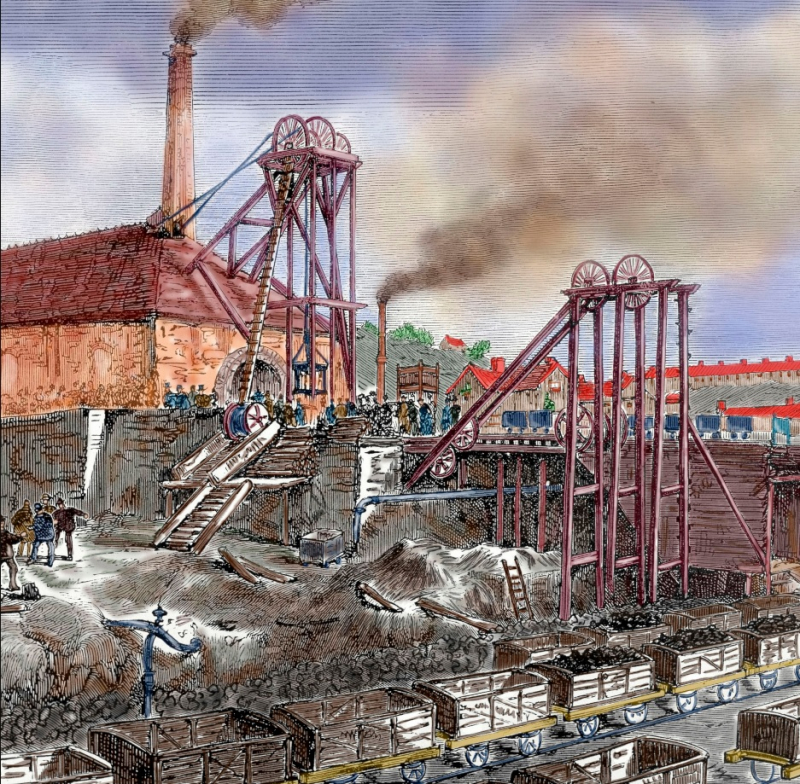
thoughtco.com 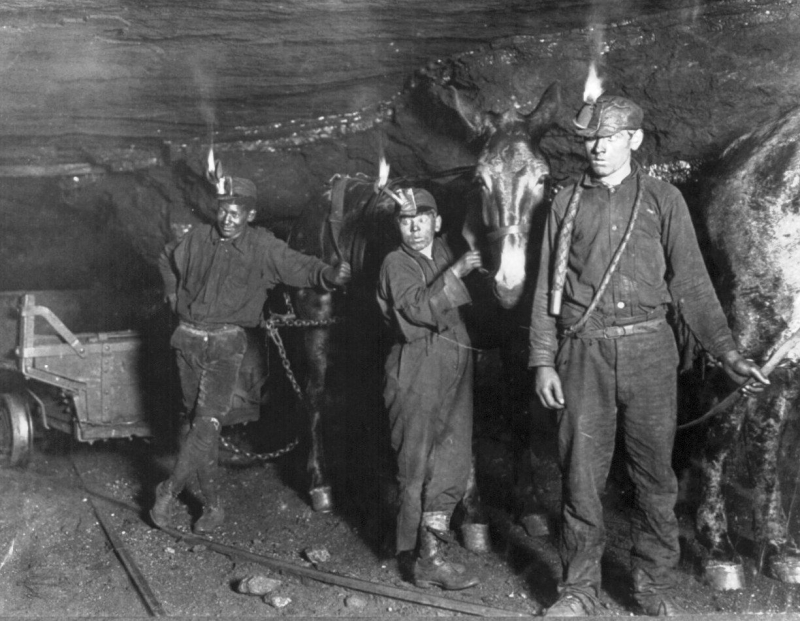
thoughtco.com -
The British Agricultural Revolution, sometimes known as the Second Agricultural Revolution, was an unparalleled increase in agricultural production in the United Kingdom caused by gains in labor and land productivity between the mid-seventeenth and late-nineteenth centuries. Over the century ending in 1770, agricultural output expanded faster than population, and productivity remained among the highest in the world.
This increase in food supply contributed to England and Wales' rapid population expansion, from 5.5 million in 1700 to over 9 million by 1801, while local production gave way to food imports increased in the nineteenth century as the population more than tripled to over 35 million. This resulted in a tremendous expansion in the country's population, which in turn provided a vast workforce for the factories and mines.
Using 1700 as a base year (=100), agricultural output per agricultural worker in Britain climbed consistently from approximately 50 in 1500 to around 65 in 1550, to 90 in 1600, to over 100 by 1650, to over 150 by 1750, and to over 250 by 1850. The increase in productivity hastened the reduction of the agricultural labor force share, adding to the urban workforce on which industry depends. People could leave the countryside and relocate to towns and cities where factories and mines were being built. Finally, in Britain, the Enclosure Movement resulted in increased private ownership of farms, forcing smaller farmers off their native land. This resulted in a large number of farmers migrating to towns and cities in search of work. As a result, a big workforce was developed, which industry and mine owners could then exploit.
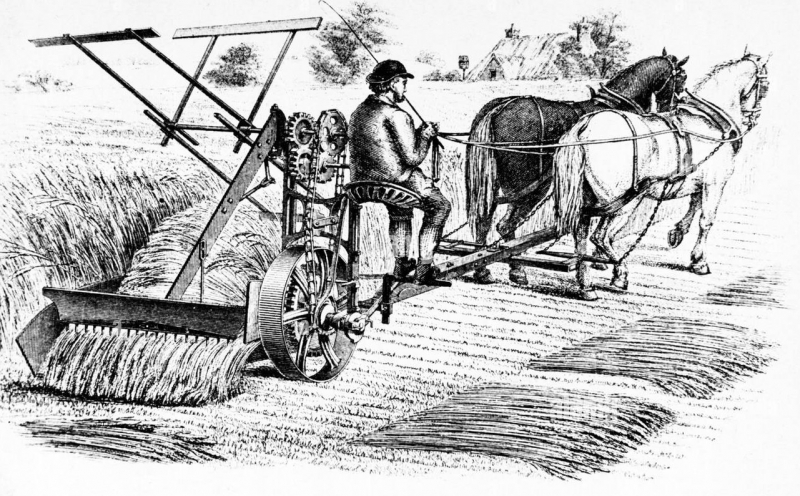
alamy.com 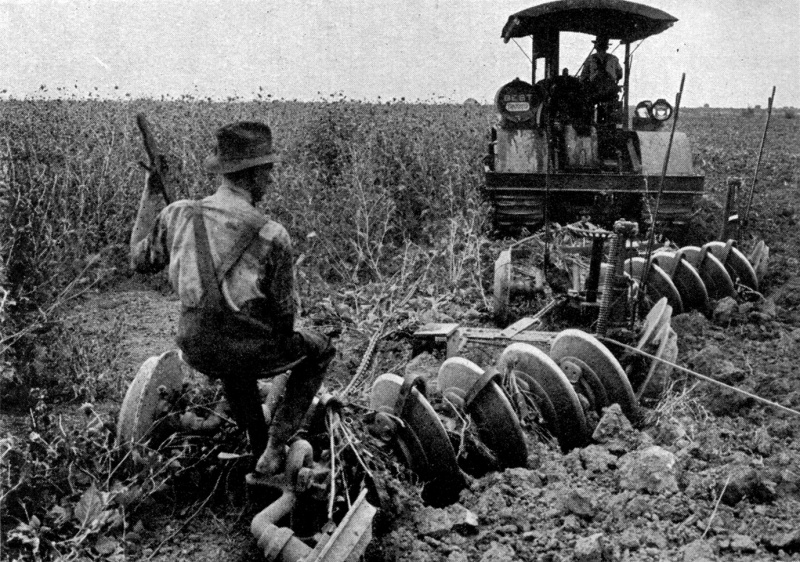
commons.wikimedia.org -
The Scientific Revolution was a set of events that heralded the emergence of modern science during the early modern period, when advances in mathematics, physics, astronomy, biology (especially human anatomy), and chemistry altered society's perceptions of nature. The Scientific Revolution began in Europe near the close of the Renaissance period, with the 1543 publication De revolutionibus orbium coelestium (On the Revolutions of the Heavenly Spheres) by Nicolaus Copernicus often considered as its beginning.
The Scientific Renaissance period is thought to have concluded in 1687 with Isaac Newton's publication Principia, which outlined the laws of motion and universal gravity, completing the synthesis of a new cosmos. The concept of a scientific revolution first appeared in the 18th-century work of Jean Sylvain Bailly, who envisioned a two-stage process of sweeping away the old and creating the new. The Scientific Revolution started in the 1500s, but the Industrial Revolution didn't start until the 1700s. Because industrial progress is in big part technological advancement, and technology is in large part applied science, it appears that the Industrial Revolution followed the Scientific Revolution as an unavoidable result.
The first direct link, according to Crawford, is that, while the steam engine did not rely on Newton's laws of thermodynamics, it did rely on a qualitative understanding of the qualities of the vacuum and the nature of atmospheric pressure. The original steam engines functioned by producing a vacuum inside a piston and using atmospheric pressure to force the piston down (high-pressure steam would not do the pushing until much later). It would not have occurred to a pre-scientific tinkerer that this could happen. Scientists studied the qualities of the vacuum in the 16th and 17th centuries, and Denis Papin showed the use of a vacuum to drive a piston to the Royal Society in the late 1600s. The second direct link is that as part of the "Republic of Letters," the inventors of the time corresponded with scientists. Thomas Newcomen, the developer of the first steam engine, corresponded with the eminent physicist Robert Hooke in particular. They talked about the engine in particular, and Hooke urged Newcomen in 1703 to drive the piston only by vacuum.
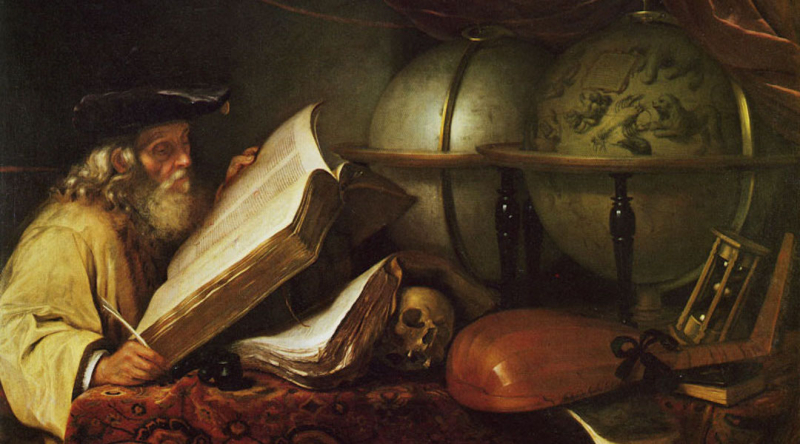
merchantsandmechanics.com 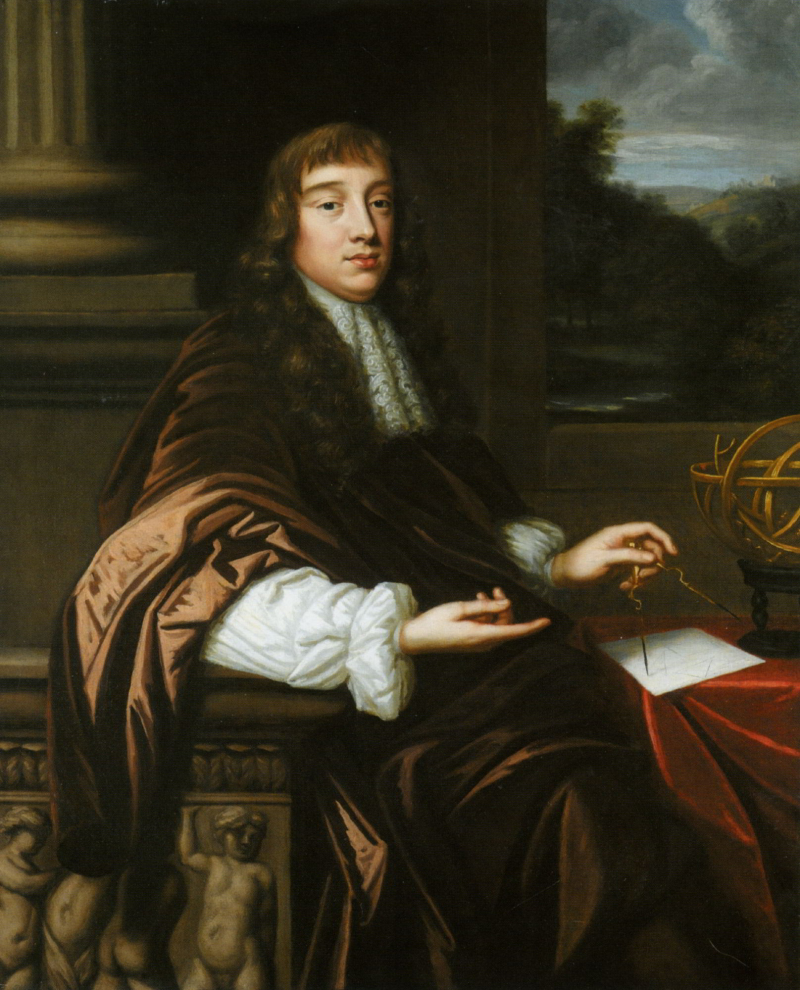
wikiwand.com -
A steam engine is one of the major causes of the Industrial Revolution. A steam engine is a type of heat engine that uses steam as its working fluid to produce mechanical work. The force produced by steam pressure is used by the steam engine to propel a piston back and forth inside a cylinder. This pushing force can be converted into a rotating force for work by using a connecting rod and crank. The word "steam engine" normally refers only to the reciprocating engines described above, not to the steam turbine. Steam engines are external combustion engines that separate the working fluid from the combustion products. The Rankine cycle is the optimum thermodynamic cycle utilized to examine this process. In general, the phrase steam engine can apply to either whole steam plants (including boilers and other components), such as railway steam locomotives and portable engines, or to the piston or turbine machinery alone, as in the beam engine and stationary steam engine.
Although steam-powered devices were known as early as the aeolipile in the first century AD, with a few other usages documented in the 16th century, Jerónimo de Ayanz y Beaumont patented the first steam-powered water pump for emptying mines in 1606. Thomas Savery is credited with developing the first commercially available steam-powered device, a steam pump that employed steam pressure to operate directly on the water. Thomas Newcomen invented the first commercially viable engine capable of transmitting continuous power to the machine in 1712. In 1764, James Watt made a major innovation by diverting spent steam to a separate vessel for condensation, significantly increasing the amount of work produced per unit of fuel consumed. Stationary steam engines powered the enterprises of the Industrial Revolution by the nineteenth century.
It resulted in the transformation of not only work but also of the entire society for whom that work was done. While a variety of other inventions and devices contributed significantly to the march toward industrialization, it was the steam engine, above all, that established the place and importance of the machine in the modern world and enabled the construction of large factories, which were among the most significant undertakings of industrial civilization.
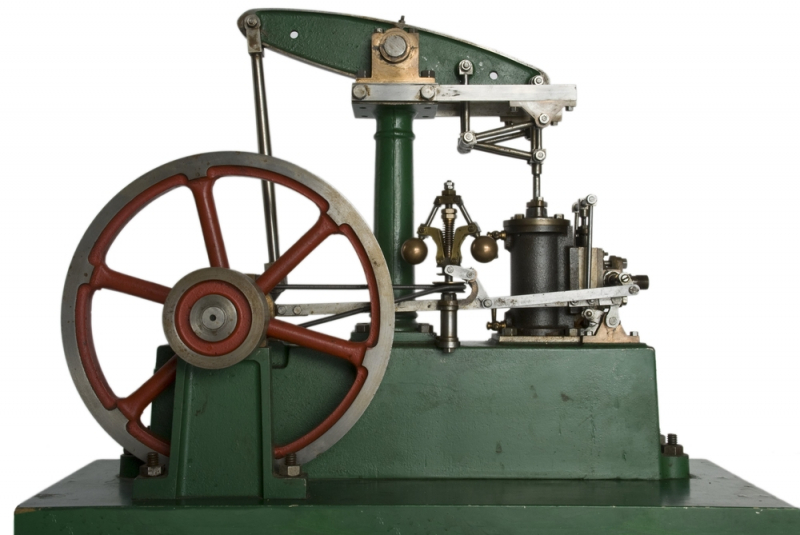
livescience.com 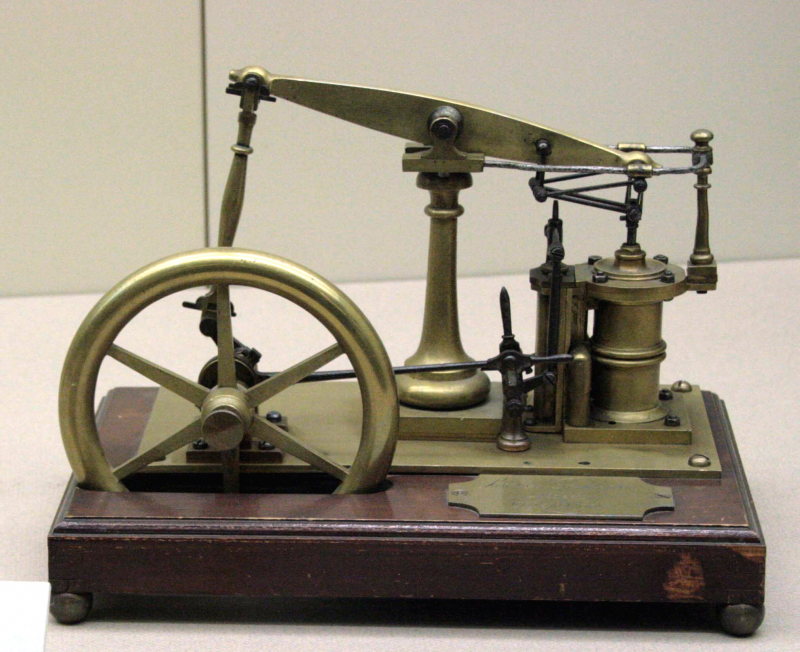
commons.wikimedia.org -
One of the major causes of the Industrial Revolution is the growth in population. Britain witnessed tremendous changes during the first Industrial Revolution, including scientific breakthroughs, increased gross national product, new technologies, and architectural innovation. At the same time, the population grew, becoming more urbanized, healthier, and educated.
According to Wilde, immigration from rural areas of the United Kingdom and foreign countries contributed to a continuous rise in population as the Industrial Revolution began. This expansion provided cities with the workforces they badly needed to keep up with new innovations, allowing the revolution to last several decades. Job possibilities, greater pay, and improved nutrition drew people together to form new urban cultures.
According to historical studies, the population of England remained largely static and expanded very little between 1700 and 1750, in the years preceding the Industrial Revolution. There are no precise figures for the era preceding the establishment of a nationwide census, but known historical documents show that Britain underwent a demographic explosion in the latter half of the century. According to some estimates, the population of England more than doubled between 1750 and 1850. The growing population aided the Industrial Revolution significantly. It increased demand for food and other commodities (like cloth). The growing population also aided in filling the numerous new jobs produced by the Industrial Revolution.
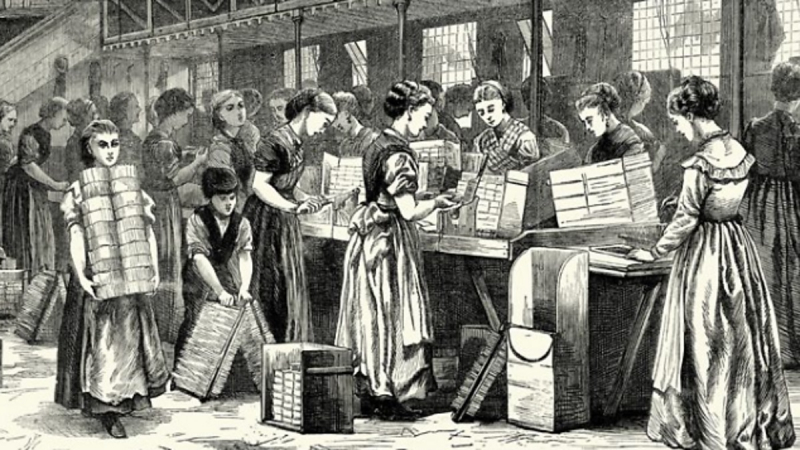
bbc.co.uk 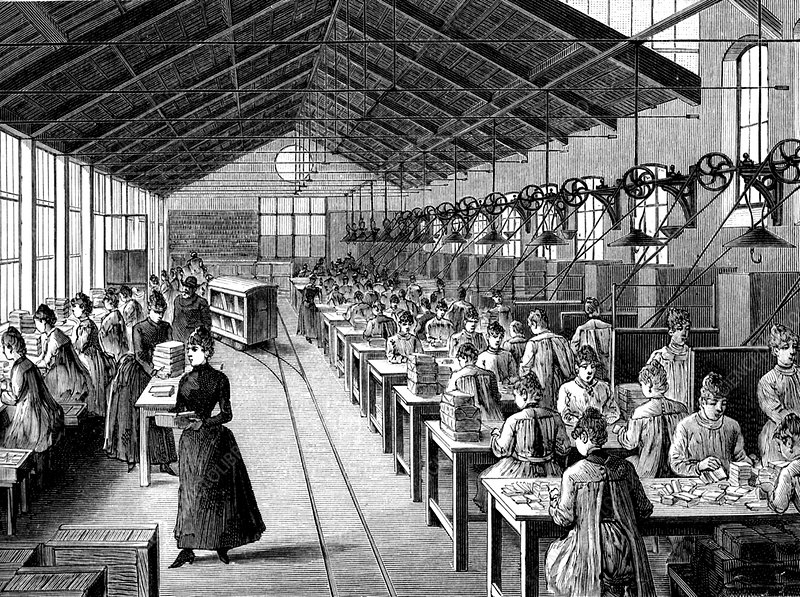
sciencephoto.com -
This acceleration of technological invention produced a plethora of new tools and equipment. It also included more subtle practical advances in areas such as labor, production, and resource utilization. Key inventions and breakthroughs shaped almost every existing field of human activity along industrial lines, while also spawning a slew of new ones.
Agricultural technologies in Western Europe had gradually improved throughout the years. There are some technological inventions, such as the seed drill invented around 1701 by Jethro Tull. Crop rotation and land usage, soil health, the development of new crop varieties, and animal husbandry also advanced. As a result, yields increased steadily, allowing a rapidly rising population to be fed with better nutrition.
Steam engines attained a high level of efficiency and variety in their design in the 18th century, mainly to the work of the Scottish engineer James Watt and his business partner Matthew Boulton. They quickly became the industry standard for British and, eventually, European industry. The steam engine powered mechanized industry manufacturing. Its development removed the necessity for firms to site their plants on or near sources of water power. Large corporations began to consolidate in rapidly expanding industrial cities.
The spinning jenny, spinning mule, and power loom were among the first technological instruments to boost output. Power looms, carding machines, and other specialized equipments were first powered by humans, then by water, and eventually by steam. The cotton gin, invented in the United States in 1793, was another well-known invention. These technological innovations increased cotton cultivation and export from slave states in the United States, a crucial British supplier.
Steam engines were recognized as valuable in locomotion, resulting in the early 19th century birth of the steamboat. After 1825, high-pressure steam engines powered railroad locomotives in the United Kingdom. Railways quickly spread across Europe and North America, eventually reaching Asia in the latter half of the nineteenth century. Railroads grew to be one of the world's most important enterprises as they pushed the boundaries of industrial society.
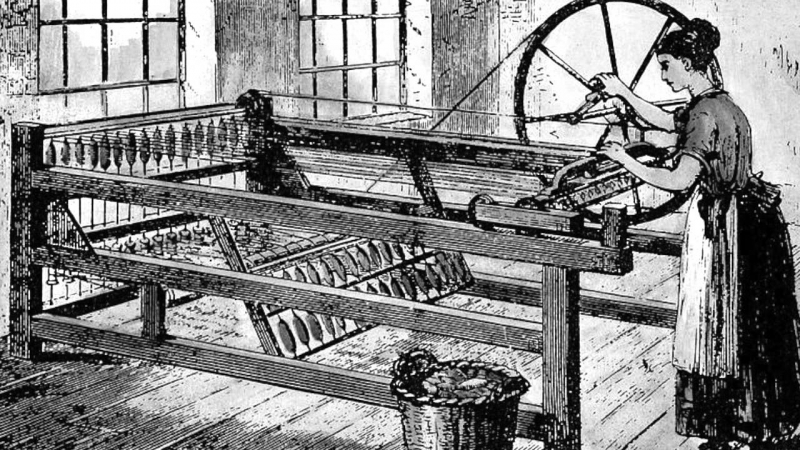
historycrunch.com 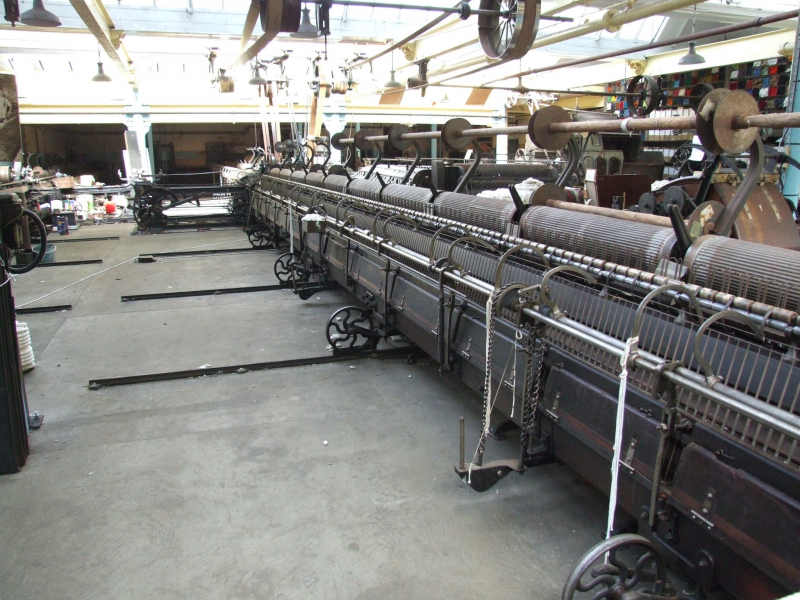
en-academic.com










